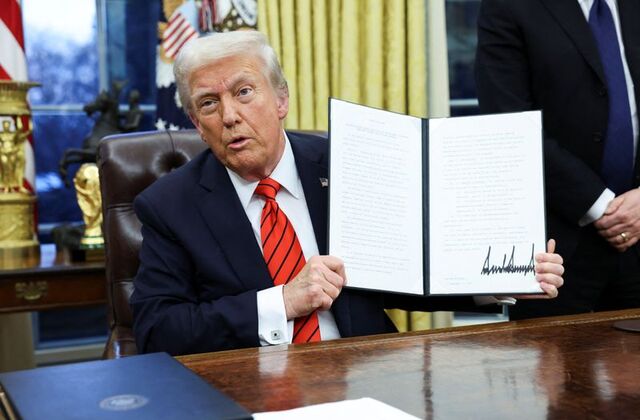In a sweeping move with far-reaching economic consequences, U.S. President Donald Trump has announced a fresh round of aggressive tariffs on imports from over a dozen countries, including key trade partners such as Canada, Switzerland, and South Africa. The tariffs, which range from 30% to 39%, are set to take effect on August 8, 2025.
The announcement sent immediate shockwaves through global financial markets. Major stock indices in New York, London, Frankfurt, and Tokyo tumbled at the opening bell, with investors reacting swiftly to the heightened uncertainty around international trade and the broader global economic outlook.
Sharp Market Reaction
Wall Street saw a dramatic decline in early tradng, with the Dow Jones Industrial Average and the S&P 500 both dropping more than 2% within hours. Markets in Europe and Asia mirrored the sell-off, as investors assessed the potential impact of disrupted supply chains and retaliatory trade measures from affected countries.
Commodities also saw volatility, with oil prices dipping on fears of slower global demand, while gold surged as investors sought safe havens.
Economic Slowdown Adds to Tensions
The tariff announcement comes on the heels of a weaker-than-expected U.S. jobs report for July, which showed only 73,000 new hires—well below projections. Additionally, revisions to May and June hiring figures were marked downward, further stoking concerns about the strength of the U.S. labor market.
Economists now anticipate that the Federal Reserve will consider cutting interest rates in its September meeting to support the economy amid signs of slowing growth and escalating trade tensions.
“The dual shock of protectionist trade measures and a softening labor market is putting considerable pressure on monetary policy,” said one senior economist. “The Fed may have no choice but to intervene.”
Global Repercussions Expected
Trade partners have expressed strong disapproval, with several countries vowing to challenge the new tariffs through the World Trade Organization. Others are considering countermeasures that could target key American exports such as agricultural products, automobiles, and technology components.
Canada’s Ministry of Trade called the move “an unjustified and harmful escalation,” while Switzerland said it would “pursue all legal and diplomatic means to defend its economic interests.”
South African officials indicated that the new tariffs would impact critical sectors, including mining and manufacturing, and could strain bilateral relations at a time when regional cooperation is essential.
Domestic Debate Rages
Domestically, the tariff policy has sparked renewed debate. Supporters argue the move will encourage domestic manufacturing and reduce reliance on foreign goods. Critics, however, warn of inflationary pressures, supply chain disruptions, and potential job losses in industries dependent on international trade.
Small- and mid-sized U.S. businesses that rely on imported materials are particularly concerned about increased costs. “We’ve built long-term relationships with overseas suppliers. These tariffs could upend everything,” said a manufacturing CEO based in Ohio.
What Lies Ahead
As the world braces for retaliatory actions and further volatility, economists caution that the road ahead will be turbulent. Many view this policy shift as a defining moment in U.S. trade strategy—one that could reshape global commerce for years to come.
With central banks, policymakers, and businesses on edge, the next few months are expected to be critical in determining whether the world’s largest economy can navigate through the storm of protectionism and economic fragility—or whether deeper global disruptions await.
